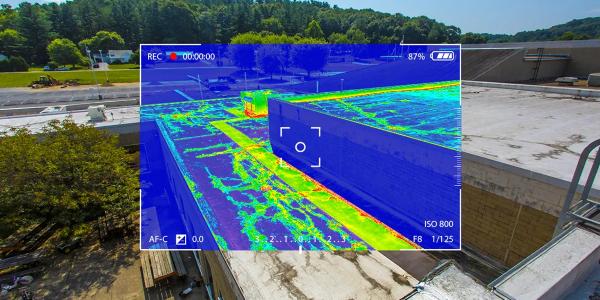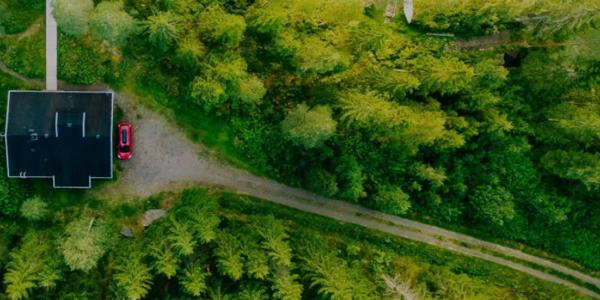Demystifying infrared imaging and improving sustainability

By Dani Sheehan.
Proactive roof maintenance is the key to a sustainable future. See how infrared technology can help us work toward greener solutions.
In the roofing industry, we are no strangers to the necessity of maintenance. However, keeping roofs watertight has historically involved reactive rather than proactive measures. Today, with almost 16.4 billion square feet of rooftop space in warehouses and distribution centers alone, the importance of more efficient, predictive diagnostics is clear – it could significantly improve the sustainability of our built environment.
The use of infrared imaging in roofing diagnostics empowers contractors to detect moisture issues before they become costly problems. As Mark Powell, manager of diagnostic services and building maintenance international trainer for Tremco Roofing, explained, “Before infrared was adopted by the roofing industry, what took place was water would come into the system and start leaks. By the time anyone noticed, enough water had penetrated to create some major problems.”
How infrared imaging works
Using infrared technology, contractors can detect temperature variations across the surface of a roof, with areas containing moisture appearing warmer than dry areas. “Everything gives off energy, and that energy is in the form of an electromagnetic wave,” Mark shared. “Infrared falls within a certain spectrum, and the cameras we use detect temperature differentials, not the moisture itself.”
As the roof heats up during the day, areas with trapped moisture retain more energy, which becomes visible in the evening as the roof cools. This thermal window is what infrared cameras rely on to identify moisture issues and it’s important to receive proper training before performing these scans. If the imaging is done at the wrong time, the reading may be inaccurate.
A sustainable approach to roof longevity
One of the key benefits of infrared technology is its potential to extend the life of a roof while reducing material waste. Mark explained, “If you catch a leak early enough, you’re only needing to replace that top layer of insulation and restore it. Then, with continued early detection, you can create a sustainable roof that saves millions of dollars.” This reduces the amount of roofing materials in landfills and extends the roof's longevity, cutting down wasteful and disruptive replacements.
Infrared imaging is more than just a diagnostic tool – it's an opportunity to work toward a more sustainable built environment. By specializing in this technology, contractors can become leaders in proactive maintenance, extending the life of roofing systems while reducing the industry’s environmental footprint.
The future of roofing is in early detection and sustainability – make sure you’re ready to be part of it. To learn more about how infrared technology can transform your roofing practice, consider investing in specialized training and certifications.
Learn more about Tremco in their Coffee Shop Directory or visit www.tremcoroofing.com.

About Dani
Dani is a writer for The Coffee Shops and AskARoofer™. When she's not writing or researching, she's teaching yoga classes or exploring new hiking trails.






















Comments
Leave a Reply
Have an account? Login to leave a comment!
Sign In